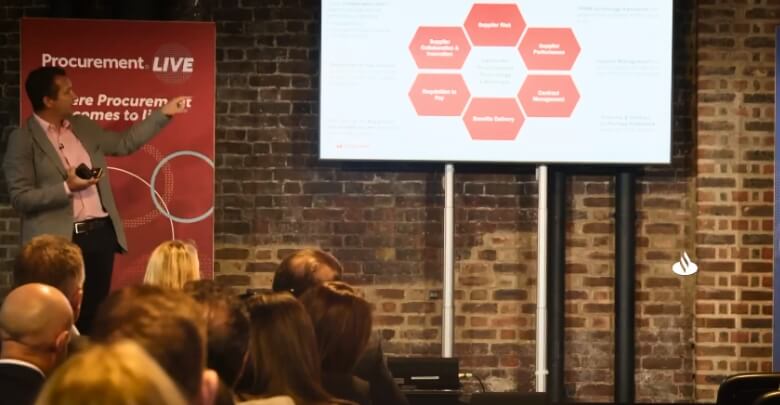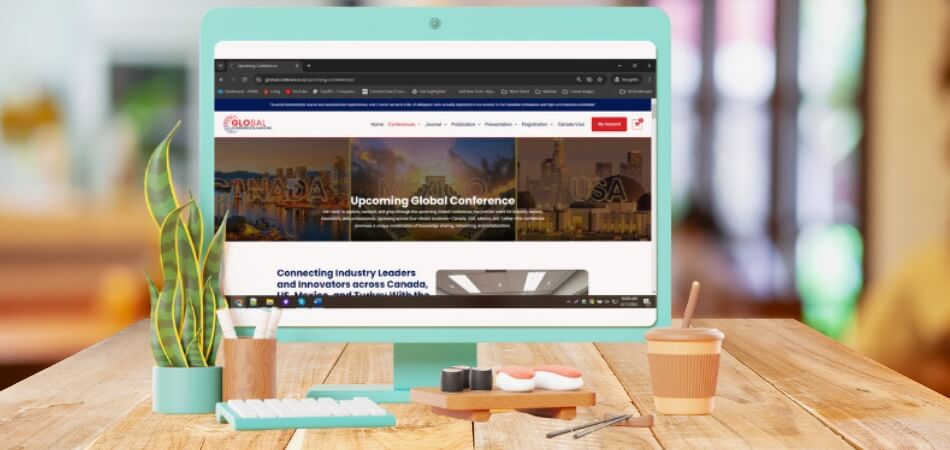Attending a conference is an exciting opportunity to learn, network, and grow professionally. However, it is crucial to understand the registration process before registering to avoid hassles. So, what is the registration flow for a conference?
The registration flow for a conference includes finding the conference, filling out the registration form, making payment, receiving confirmation, and completing on-site check-in. This process ensures a smooth entry and participation in the event.
Following these steps carefully ensures you don’t miss out on any important details. Ready to dig deeper into each step and make your next conference experience seamless? Follow along with the rest of this article for detailed tips and insights.
What Happens at a Conference?
Attending a conference can be a transformative experience for professionals. It’s a place where industry experts gather to share knowledge and network. You can make the most of a conference if you understand what happens at it. These events are designed to provide valuable insights and encourage connections.

Conferences often begin with keynote speeches from industry leaders. These speeches set the tone and provide valuable insights into current trends. At an international educational conference on culinary arts & nutrition, keynote speakers might focus on global food trends. These talks can inspire and inform your professional strategies.
Breakout sessions follow the keynotes, offering an in-depth exploration of specific topics. Smaller sessions allow for more interaction. You can increase your skills and knowledge by attending a breakout session. Networking is a crucial aspect of any conference, involving meeting peers, exchanging ideas, and forming new connections. But in order to know what happens at the conference, you have to attend the conference first and conference registration is a mandatory step to join your desired conference.
What is the Registration Flow for a Conference?
Registering for a conference involves several important steps to ensure a smooth experience. Here is a step-by-step guide to help you guide the registration process effectively.

Step 1: Find the Conference and Review Details
The first step is finding the right conference that aligns with your interests or field of study. Once you’ve identified the conference, visit the official website to review all the details—dates, location, registration deadlines, fees, and any special requirements. You will be able to plan accordingly if you are aware of these details.
Step 2: Choose the Right Registration Type
Conferences often offer different registration types, such as early-bird, regular, or late registration, each with varying fees. There might also be categories like student, professional, presenter, or attendee. Make sure to select the category that best fits your situation to avoid overpaying or selecting the wrong package.
Step 3: Complete the Registration Form
Once you’ve decided on your registration type, it’s time to fill out the registration form. This form will typically ask for personal information such as your name, contact details, affiliation, and sometimes your professional background. If you’re presenting, you might need to submit your abstract or title at this stage.
Step 4: Select Additional Options
During the registration process, you’ll often have the option to choose additional items, such as workshops, networking events, or meals. Carefully consider which of these add-ons are valuable to you and select accordingly. Keep in mind that some of these options might have additional costs.
Step 5: Payment Process
After completing the registration form and selecting any extras, you’ll move on to the payment stage. Conferences typically accept credit cards, but some may offer other payment methods like PayPal or bank transfers to pay the average conference registration fee for attending the event. Ensure your payment method is ready, and double-check the amount before proceeding. Once you’ve paid, you should receive a confirmation email—keep this as it’s your proof of registration.
Step 6: Receive Confirmation and Additional Instructions
After payment, you’ll receive a confirmation email or receipt. This email often includes important details like your registration number, event access instructions, and any materials or schedules you might need. Save this email in a safe place, as it’s your key to the conference.
Step 7: Prepare for the Conference
With your registration confirmed, it’s time to prepare. If the conference offers an app or online platform, download it to stay updated on schedules, speakers, and any last-minute changes. If you’re presenting, finalize your presentation materials and ensure everything is in order.
Step 8: Check-In at the Conference
On the day of the conference, you’ll need to check in at the registration desk. Bring a copy of your confirmation email and any identification the conference might require. You’ll typically receive a badge, program, and any other materials you need for the event.
The conference registration flow is designed to be smooth, but it’s essential to pay attention to each step to avoid any hiccups. From selecting the right registration type to checking in on the day of the event, following this process ensures you’re fully prepared and ready to make the most of your conference experience.
Can I Make Changes to My Registration Information After Submission?
Yes, you can typically make changes to your registration information after submission. However, the ease and extent to which changes can be made depend on several factors, including the conference’s policies and timing. You can guide the process smoothly if you understand these factors.
Conference Policies
Each conference has its own policies regarding registration changes. Some may allow free changes, while others might charge a fee. You should review the conference’s terms and conditions. Knowing these policies helps you avoid any surprises.
Timing of Changes
The timing of your requested changes is crucial. Early changes are usually easier to accommodate. As the conference date approaches, changes might be restricted or incur additional costs. It’s best to make changes as soon as possible.
Types of Changes
Consider the type of changes you need to make. Simple changes like updating contact information are often straightforward. However, significant changes like substituting attendees or altering session choices might be more complex. You can plan accordingly if you understand this.
Contacting Support
If you need to make changes, contact the conference support team promptly. Provide all necessary details to expedite the process. Be clear and concise in your communication. Good communication ensures that your request is handled efficiently.
How Will I Receive My Conference Confirmation?
Receiving your conference confirmation is a crucial step in ensuring your attendance. Here’s a step-by-step guide on how you will receive it, so you can be fully prepared.
- Email Confirmation: After completing your registration and payment, you will receive a confirmation email. This email includes essential details about your registration and the event. Check your inbox and spam folder.
- Registration Portal: Some conferences provide a registration portal for attendees. Log in to the portal using your credentials to access your confirmation details. This portal often contains additional event information.
- Mobile App Notifications: If the conference has a mobile app, you may receive your confirmation through app notifications. Download and install the app, then enable notifications. This ensures you stay updated on event details.
- Postal Mail: In rare cases, conferences might send confirmation via postal mail. This method is less common but still used occasionally. Check your mailbox if this option is mentioned during registration.
- Customer Support: If you don’t receive your confirmation through any of these methods, reach out to the conference’s customer support team. Provide them with your registration information, including proof of payment for the registration fee for an entrepreneurship conference, and they can resend the confirmation or help resolve any issues you encounter.
Tips for Maximize Your First Conference
Attending your first conference can be an exciting yet overwhelming experience. To make the most out of it, a little preparation and strategic planning go a long way. Here are some tips to help you maximize your first conference experience.
Plan Ahead
Research the conference schedule and identify key sessions you want to attend. Prioritize sessions that align with your interests and professional goals. Make a plan for each day to stay organized. This will help you manage your time effectively.
Network Actively
Networking is one of the most valuable aspects of a conference. Introduce yourself to fellow attendees and exchange contact information. Attend social events and networking sessions to meet new people. Building connections can lead to future collaborations.
Take Notes
Bring a notebook or use a digital device to take notes during sessions. Jot down key points, ideas, and contacts you find valuable. Reviewing these notes later helps reinforce learning. It also ensures you don’t forget important details.
Engage in Discussions
Participate actively in discussions during and after sessions. Ask questions to clarify points and share your perspectives. Engaging in discussions helps deepen your understanding of the topics. It also makes you more memorable to speakers and other attendees.
Follow Up
After the conference, follow up with the contacts you’ve made. Send personalized emails or connect on professional social networks. This reinforces your new connections and opens doors for future opportunities. It also shows your commitment to building professional relationships.
Frequently Asked Questions
A smooth and successful conference registration process depends on understanding the registration flow. Here are some frequently asked questions to help you guide the process.
What Documents Do I Need for On-Site Check-In?
You will need your registration confirmation email and a valid ID for on-site check-in. Some conferences may require additional documents, such as a receipt of payment or a proof of membership in a professional organization. It’s always a good idea to have a printed or digital copy of the agenda as well. Check the event’s guidelines to ensure you have everything needed for a smooth check-in process.
How Early Should I Arrive for On-Site Check-In?
Arrive at least 30 minutes before the start time for on-site check-in. Early arrival allows you to complete the check-in process smoothly and avoid last-minute stress. It also gives you time to settle in, grab any conference materials, and review the agenda. Being early helps ensure you don’t miss important opening remarks or sessions.
What Should I Do if I Don’t Receive My Confirmation Email?
If you don’t receive your confirmation email, first check your spam folder to ensure it wasn’t filtered out. If it’s not there, contact the conference’s customer support team as soon as possible. Provide your registration details, including your name and email address, to help them locate your registration. Resolving the issue quickly will ensure you have the necessary information for check-in.
Can I Transfer My Registration to Someone Else?
Some conferences allow registration transfers, but policies can vary widely between events. Check the conference’s transfer policy on their website to understand the specific rules. If transfers are allowed, you may need to contact the support team to complete the process and inquire about any associated fees. Make sure the person you’re transferring to meets the registration requirements.
What Happens if I Miss the Registration Deadline?
Missing the registration deadline may prevent you from attending the conference altogether, as many conferences have strict cut-off dates. Some conferences offer late registration options, but these may come with an additional fee. Check the conference website for any available options and deadlines to see if late registration is an option. It’s always best to register as early as possible to secure your spot.
Last Words
Attending a conference can be an incredibly enriching experience, providing opportunities to learn, network, and grow professionally. You can ensure a smooth and successful participation experience by understanding the key steps. Maximizing the benefits of your first conference requires thorough preparation and strategic planning.
To start, familiarizing yourself with the registration process is crucial. This includes finding the conference, filling out the registration form, making payment, and completing on-site check-in. Knowing what is the registration flow for a conference helps you avoid any potential pitfalls and ensures you are fully prepared for the event.
Once you have registered, focus on making the most of the conference by planning, actively networking, taking notes, engaging in discussions, and following up with new contacts. Gain valuable insights and connections with these strategies.






